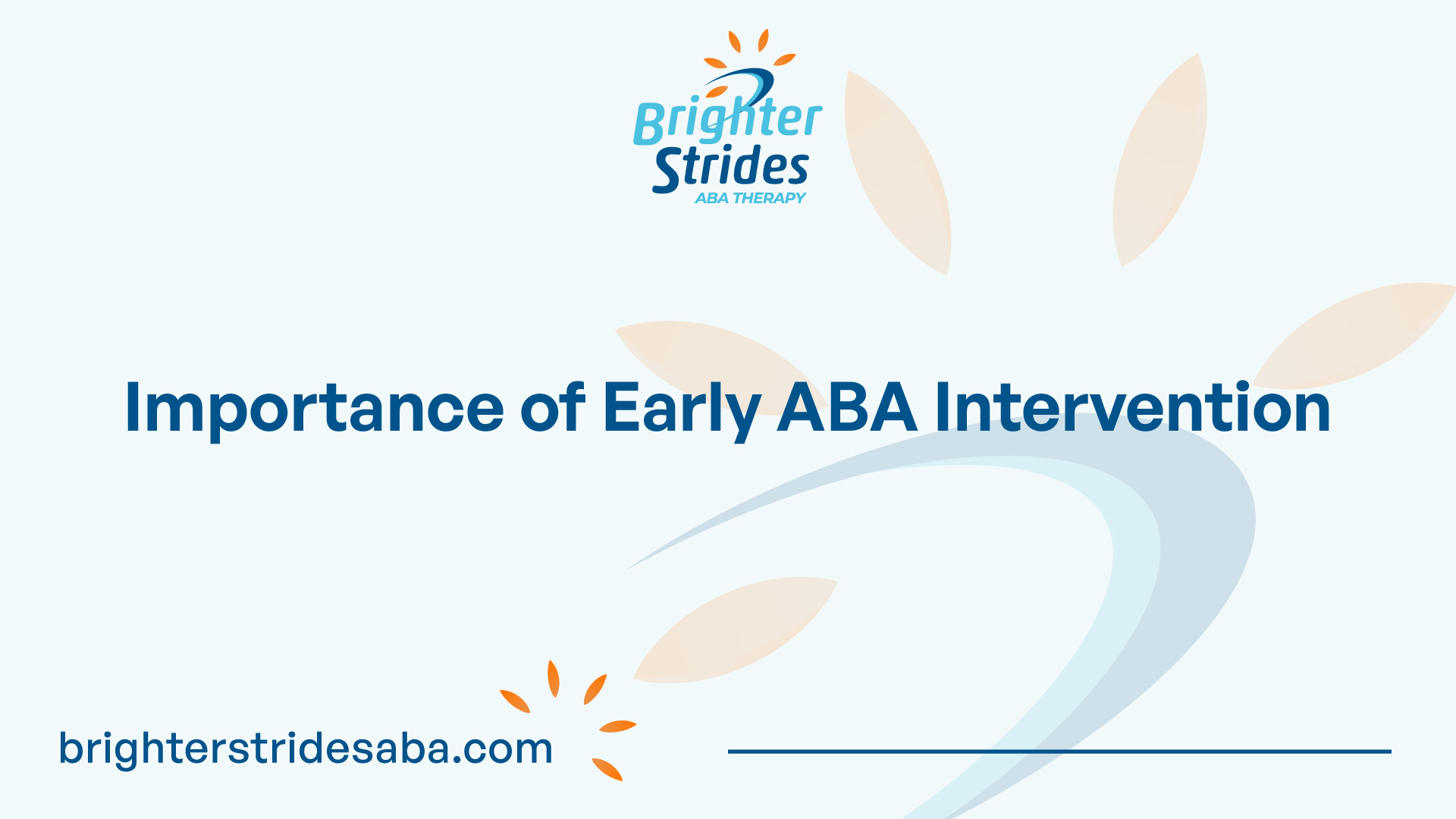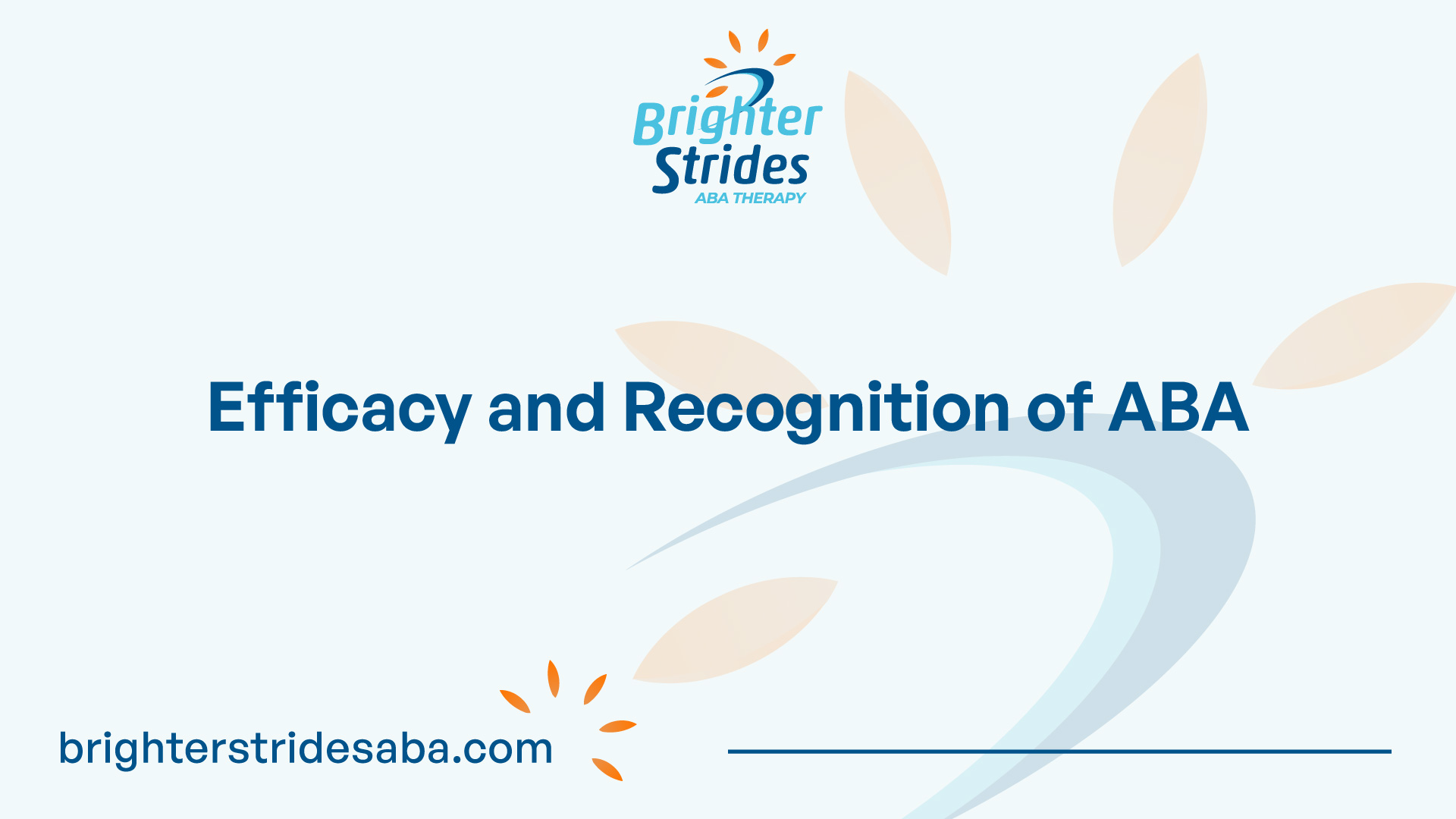
Understanding Applied Behavior Analysis
Applied Behavior Analysis (ABA) is a scientific approach that focuses on enhancing behavior using principles from the science of behavior. ABA therapy aims to make socially significant changes by systematically analyzing and modifying behavior patterns. This section will explore the principles of ABA and the role of Board Certified Behavior Analysts (BCBAs) in implementing this approach effectively.
Principles of ABA
ABA therapy for children with autism is guided by seven dimensions supported by scientific-based research. These dimensions encourage behavior changes and improvements in daily living. The principles of ABA include:
- Antecedent: This dimension involves identifying and modifying the events or circumstances that occur before a behavior. By altering the antecedents, ABA aims to set the stage for desired behaviors to occur more frequently.
- Behavior: The behavior dimension focuses on analyzing and understanding the specific behaviors of individuals with autism. ABA therapists carefully observe and measure behaviors to identify patterns and develop strategies for behavior change.
- Consequence: The consequence dimension involves examining the outcomes or consequences that follow a behavior. ABA seeks to modify consequences to reinforce desired behaviors and reduce the occurrence of undesirable behaviors.
- Functional: ABA emphasizes understanding the function or purpose of behaviors. By identifying the underlying reasons for behaviors, ABA therapists can develop interventions that address the root causes, leading to more effective behavior change.
- Generalization: ABA aims to facilitate the generalization of learned skills across different settings and individuals. This dimension focuses on ensuring that the acquired skills are maintained and applied in various contexts.
- Maintenance: Maintenance involves promoting the long-term retention of learned skills. ABA therapists work to ensure that the skills acquired through therapy are maintained and continue to be relevant over time.
- Treatment Integrity: Treatment integrity refers to the accurate implementation of ABA techniques and strategies. It emphasizes the importance of consistency and fidelity in delivering ABA interventions.
Role of Board Certified Behavior Analysts
Board Certified Behavior Analysts (BCBAs) play a crucial role in the implementation of ABA therapy. These trained professionals specialize in behavior analysis and are responsible for assessing, analyzing, and providing interventions to address behavioral issues and promote positive behavior changes. BCBAs work closely with individuals with autism, their families, and other professionals to develop and implement individualized ABA treatment plans.
BCBAs conduct thorough assessments, including behavioral assessments, to identify specific target behaviors and develop intervention strategies tailored to the individual’s needs. They monitor progress, make data-driven decisions, and modify intervention plans as required.
In addition to direct client interaction, BCBAs also play a critical role in training and supervising other professionals, such as behavior technicians, who work directly with individuals with autism. They provide guidance, support, and ongoing evaluation to ensure the effective implementation of ABA techniques.
It’s important to note that ABA therapy is an evidence-based practice and is recognized as a best practice treatment by the US Surgeon General and the American Psychological Association [2]. Over 20 studies have demonstrated that intensive and long-term therapy using ABA principles improves outcomes for many children with autism [2].
Understanding the principles of ABA and the valuable role of BCBAs provides a foundation for comprehending the significance and effectiveness of this approach in supporting individuals with autism. Moving forward, we will explore the importance of early ABA intervention and the benefits it offers for children with autism.

Importance of Early ABA Intervention
Early intervention is crucial when it comes to implementing applied behavior strategies for individuals with autism spectrum disorder (ASD). ABA therapy, with its evidence-based approach, has shown significant benefits for children with ASD, especially when started at a young age.
Benefits of Starting ABA Early
Research has consistently demonstrated that beginning ABA therapy before the age of four can have a profound impact on a child’s development, particularly in improving social and communication skills. According to studies, early ABA intervention can enhance children’s quality of life and help them acquire essential life skills while reducing disruptive behaviors. By addressing challenging behaviors and promoting positive behaviors at an early stage, ABA therapy aims to equip individuals with the tools they need to navigate daily life successfully.
Evolution of ABA Therapy
The roots of ABA therapy for individuals with autism and related developmental disorders can be traced back to the 1960s. Over the years, ABA has evolved and refined its methods of behavior analysis to provide effective interventions. Drawing from decades of research and practice, ABA therapy has become a widely recognized and utilized approach in the field of autism intervention [2].
The field of ABA continues to evolve, incorporating new findings and advancements to enhance treatment outcomes for individuals with autism. Ongoing research and the dedication of professionals in the field contribute to the continual improvement of ABA therapy techniques, making it a dynamic and effective approach in addressing the unique challenges faced by individuals with autism.
By recognizing the importance of early ABA intervention and understanding the evolution of ABA therapy, individuals with autism can receive the support they need to thrive. Early intervention can pave the way for improved outcomes, empowering individuals with the necessary skills to lead fulfilling lives.
Customized ABA Programs
When it comes to implementing effective ABA strategies for individuals with autism, customization is key. ABA programs are designed to meet the unique needs of each learner, focusing on helping them develop skills that will enhance their independence and overall success in the short term and future [2]. In this section, we will explore two crucial aspects of customized ABA programs: individualized treatment plans and family involvement.
Individualized Treatment Plans
ABA programs are highly individualized and tailored to the specific needs, interests, preferences, and family situations of each learner. A board-certified behavior analyst (BCBA) takes the lead in designing and overseeing these treatment plans. The BCBA conducts a thorough behavioral assessment to identify the learner’s strengths, areas for improvement, and target behaviors that need modification.
The individualized treatment plan outlines the specific goals, strategies, and interventions that will be implemented to address the learner’s needs. It provides a roadmap for the ABA team and ensures consistency across sessions and individuals involved in the learner’s care. These plans are vital for maintaining behavior modifications at home, as detailed treatment plans make it easier for technicians or caregivers to follow through with the recommended strategies.
Family Involvement in ABA
Family involvement plays a critical role in the success of ABA therapy. ABA programs aim to equip families with the necessary tools to navigate the challenges associated with autism. Through training and guidance, parents and caregivers are empowered to support individuals with Autism Spectrum Disorder (ASD) beyond therapy sessions [3].
In a comprehensive ABA program, family involvement is actively encouraged. The BCBA collaborates closely with parents and caregivers, providing them with the knowledge and skills to implement ABA techniques in various settings, including the home. This collaboration ensures consistency in the application of strategies, which enhances the generalization of learned skills and promotes meaningful change.
By involving families in the intervention process, ABA therapy recognizes the importance of creating a supportive environment for the individual with ASD. Family members become key partners in promoting the generalization of skills, facilitating social interactions, and fostering positive behavior changes outside of therapy sessions. The ultimate goal is to empower families to continue supporting their loved ones with autism, even beyond the duration of the ABA program.
Customized ABA programs with individualized treatment plans and family involvement ensure that the therapy aligns with the unique characteristics and needs of each learner. By tailoring the intervention to the individual’s requirements and involving the family in the process, ABA programs can maximize the potential for positive outcomes and provide individuals with the necessary tools for long-term success.

Efficacy and Recognition of ABA
Applied Behavior Analysis (ABA) has gained recognition as an effective intervention for individuals with autism spectrum disorder (ASD). Let’s explore the evidence-based practice of ABA and its applications for various conditions.
Evidence-Based Practice
ABA is considered an evidence-based best practice treatment by the US Surgeon General and the American Psychological Association. Numerous studies have shown that intensive and long-term therapy using ABA principles improves outcomes for many children with autism. The principles of ABA are based on behavior science, focusing on how people learn, change, and behave. This makes ABA applicable not only for individuals with autism but also for children with or without disabilities [5].
The effectiveness of ABA therapy is seen in its ability to target specific behaviors and teach new skills. ABA therapists use data collection and analysis to inform their decisions and make adjustments to treatment plans as needed. By utilizing evidence-based techniques, ABA therapists can create individualized treatment plans that address the unique needs of each individual.
ABA for Various Conditions
While ABA is widely recognized for its effectiveness in treating autism, it is also used for other conditions. ABA therapy can be tailored to address a range of behavioral disorders and challenges. It can effectively target issues with communication, motor skills, and behavioral difficulties in individuals with various conditions [6].
ABA therapy positively benefits children with autism spectrum disorder by improving their quality of life, teaching life skills, and reducing disruptive behaviors. However, the principles and techniques of ABA can also be applied to individuals with other developmental disabilities, such as Down syndrome or attention-deficit/hyperactivity disorder (ADHD). The flexibility of ABA allows for the customization of treatment plans to meet the specific needs of individuals with different conditions.
By utilizing evidence-based strategies and individualized treatment plans, ABA therapy has proven to be effective in improving outcomes and overall quality of life for individuals with autism and other related conditions. As the field of ABA continues to evolve, ongoing research and advancements further validate its efficacy and expand its applications.
In the next section, we will explore specific strategies and techniques used in ABA therapy, such as positive reinforcement and data-driven approaches, to provide a deeper understanding of the practical implementation of ABA principles.
Strategies in ABA Therapy
When it comes to ABA strategies, two key approaches that are widely utilized within Applied Behavior Analysis (ABA) therapy are positive reinforcement and a data-driven approach. These strategies play a significant role in promoting positive behavior change and improving the lives of individuals with autism.
Positive Reinforcement
Positive reinforcement is a core concept in ABA therapy, influencing behavior change by reinforcing desired behaviors with positive outcomes. This strategy encourages individuals to repeat the behavior that is valued, leading to an increase in its occurrence over time. By providing rewards or praise for positive behaviors, ABA therapists aim to motivate individuals and promote their independence and success. Positive reinforcement serves as a powerful tool in shaping behavior and helping individuals with autism develop skills in various domains.
In ABA therapy, positive reinforcement can take many forms depending on the individual’s preferences and interests. It could involve verbal praise, tokens, tangible rewards, or access to preferred activities. The key is to identify the specific reinforcer that motivates the individual and use it consistently to reinforce desired behaviors [5]. By associating positive outcomes with specific behaviors, individuals are more likely to engage in those behaviors in the future.
Data-Driven Approach
A data-driven approach is an integral part of ABA therapy. ABA therapists collect and analyze data to track progress, identify patterns, and make informed decisions about treatment plans. This approach ensures that interventions are individualized and tailored to the specific needs of each person receiving ABA therapy.
Data collection in ABA therapy involves systematically recording information about the individual’s behaviors, such as frequency, duration, and intensity. By using objective measurements, ABA therapists can evaluate the effectiveness of interventions and make data-based decisions about modifying or adjusting treatment plans as needed [6]. This data-driven approach allows for ongoing evaluation and refinement of the ABA program to ensure continuous progress.
ABA therapists use various methods to collect data, such as direct observation, behavior rating scales, and standardized assessments. The data collected enables therapists to analyze the effectiveness of interventions, identify trends, and make evidence-based decisions regarding treatment strategies. By relying on data, ABA therapists can provide individualized and effective interventions to individuals with autism.
By employing positive reinforcement and a data-driven approach, ABA therapists can promote positive behavior change and facilitate skill development in individuals with autism. These strategies, when implemented consistently and tailored to the individual’s needs, can have a significant impact on improving their overall quality of life and fostering their independence.
ABA Techniques in Practice
When it comes to implementing effective applied behavior strategies, various techniques are employed in the field of Applied Behavior Analysis (ABA). These techniques can be particularly beneficial for individuals with Autism Spectrum Disorder (ASD) in teaching them behaviors and skills that may not come naturally to them. Two commonly used techniques in ABA therapy are Discrete Trial Teaching (DTT) and the Picture Exchange Communication System (PECS).
Discrete Trial Teaching
Discrete Trial Teaching (DTT) is a structured teaching method that breaks down complex skills into smaller, more manageable steps. It involves presenting a clear instruction or prompt to the learner, providing reinforcement for correct responses, and gradually fading prompts to promote independent responding. DTT is especially effective in teaching skills such as language development, social skills, and academic concepts.
The technique involves three main components: the discriminative stimulus (SD), the learner’s response, and the consequences. The SD is a specific instruction or cue that indicates what behavior is expected. The learner’s response is then reinforced with positive reinforcement, such as praise, tokens, or access to preferred activities. Data is often collected during DTT sessions to track progress and make informed decisions about instructional modifications.
Picture Exchange Communication System
The Picture Exchange Communication System (PECS) is a communication technique commonly used in ABA therapy to facilitate functional communication for individuals with limited verbal skills. PECS uses a series of pictures or symbols to represent desired items, activities, or requests. It allows individuals to initiate communication and express their needs and wants effectively.
The PECS process involves several stages, starting with the learner exchanging a single picture card for a desired item or activity. As the learner progresses, they learn to combine multiple picture cards to form more complex requests or sentences. PECS promotes communication skills, social interaction, and independence.
By using visual supports and prompts, PECS helps individuals with ASD develop their communication abilities and reduce frustration. It can be implemented in various settings, including home, school, and community environments.
Both DTT and PECS are evidence-based techniques with a strong foundation in research and practice. These techniques are tailored to the individual needs of each learner and can be adapted to different developmental levels and goals. The effectiveness of these techniques lies in their ability to provide structured and systematic instruction while promoting positive reinforcement and data-driven decision-making.
To learn more about other ABA techniques and strategies, check out our articles on aba strategies and aba intervention techniques. ABA therapy offers a comprehensive approach to behavior modification and has been recognized as an effective treatment for individuals with ASD and other behavioral disorders.

 We've just released an article!
Check out our blog!
We've just released an article!
Check out our blog!



